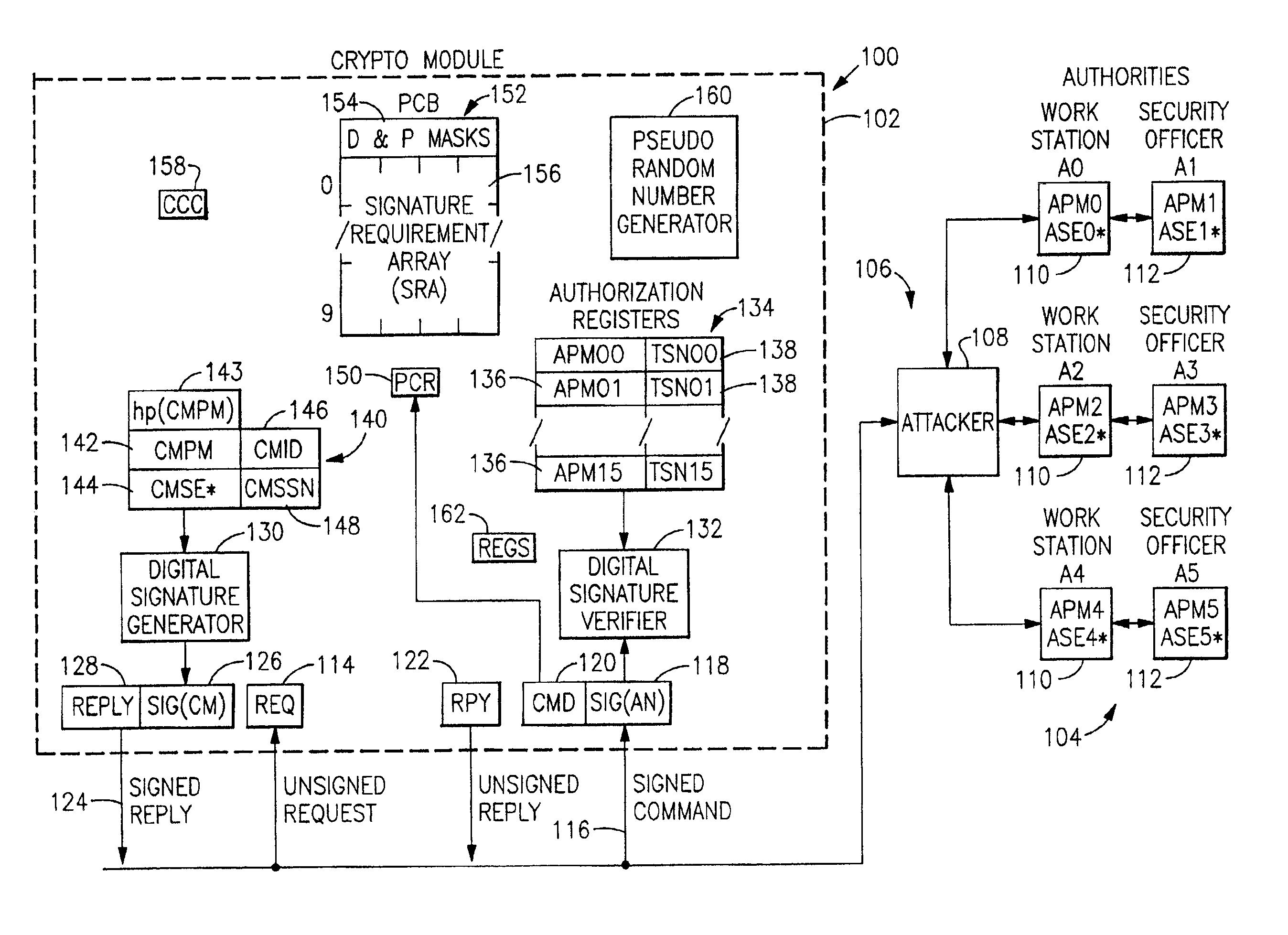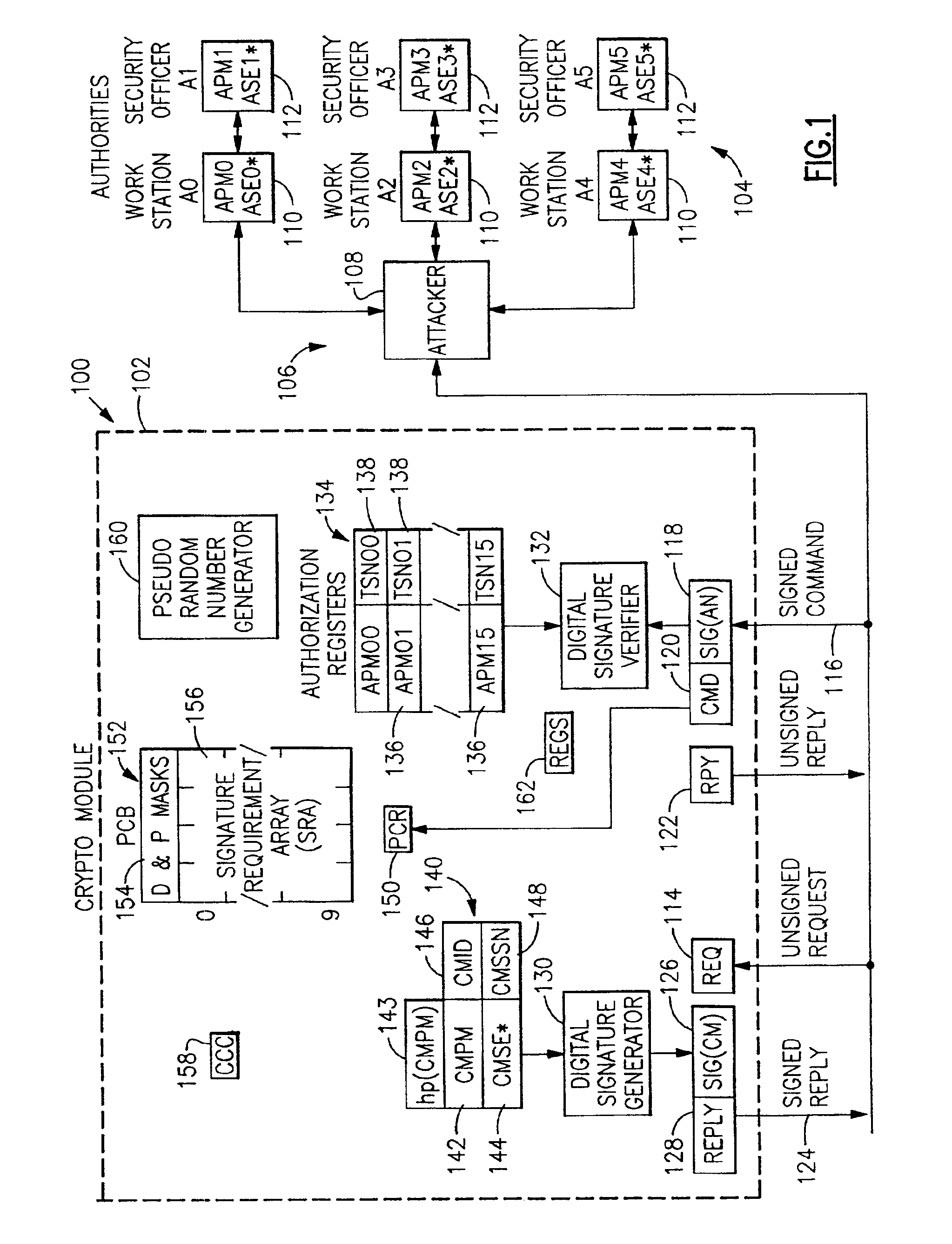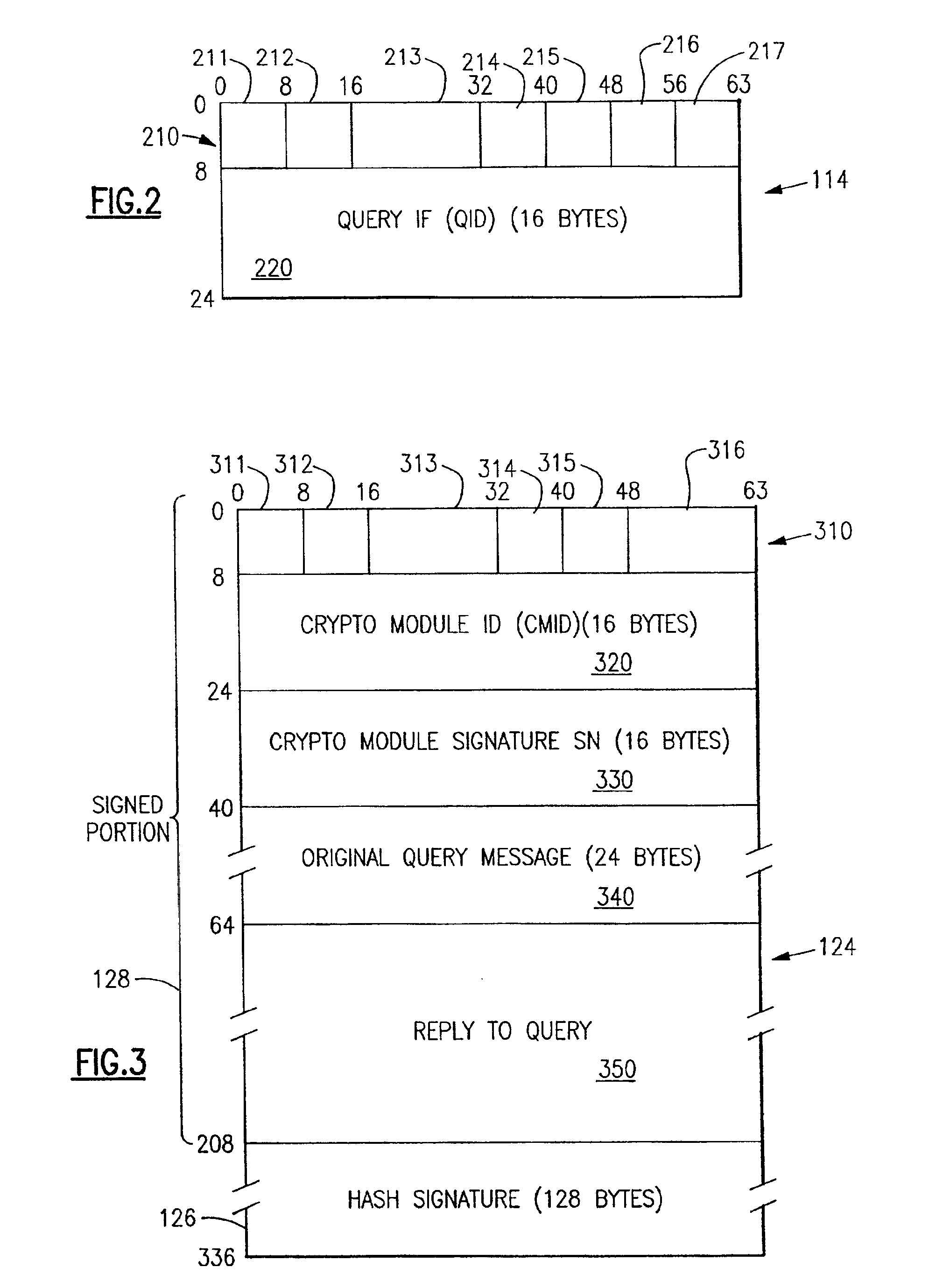Method and apparatus for providing public key security control for a cryptographic processor
a cryptographic coprocessor and public key technology, applied in the field of providing public key security control in the cryptographic coprocessor of a general purpose computer, can solve the problems of prohibitive, significant cost, implementation difficulties and costs associated with this approach, and the physical size of the tamper-resistant cable used on the integrated cryptographic facility for bipolar machines (bipolar icrf) is too large to be used on a cmos cryptographic coprocessor, so as to achieve greater confiden
- Summary
- Abstract
- Description
- Claims
- Application Information
AI Technical Summary
Benefits of technology
Problems solved by technology
Method used
Image
Examples
Embodiment Construction
Public Key Security Control (PKSC) Overview
[0063]FIG. 1 is a schematic block diagram of an information handling system 100 incorporating the present invention. As shown in FIG. 1, in system 100 a crypto module 102 is coupled to one or more authorities 104 (A0-A5) via a network 106 to which an attacker 108 is presumed to have access. Crypto module 102 may be either a standalone unit or physically integrated into a central processor complex (CPC) (not separately shown) of a general-purpose digital computer. Authorities 104 may comprise either workstations 110 (A0, A2, A4) or security officers 112 (A1, A3, A5).
[0064]The internal elements of the crypto module 102, described in more detail below and in the related applications referred to above, will now be briefly described. The following table provides an explanation of various terms used in FIG. 1:
[0065]
APMnPublic Modulus for Authority nASEn*Secret Exponent for Authority nCCCCrypto Configuration ControlCMIDCrypto Module IDCMPMCrypto M...
PUM
 Login to View More
Login to View More Abstract
Description
Claims
Application Information
 Login to View More
Login to View More - R&D
- Intellectual Property
- Life Sciences
- Materials
- Tech Scout
- Unparalleled Data Quality
- Higher Quality Content
- 60% Fewer Hallucinations
Browse by: Latest US Patents, China's latest patents, Technical Efficacy Thesaurus, Application Domain, Technology Topic, Popular Technical Reports.
© 2025 PatSnap. All rights reserved.Legal|Privacy policy|Modern Slavery Act Transparency Statement|Sitemap|About US| Contact US: help@patsnap.com



